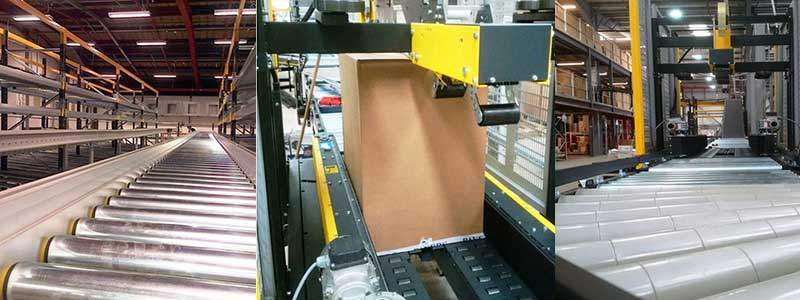
Why you Should Consider the Benefits of Warehouse Automation
Benefits of Warehouse Automation
Improving efficiency during the manufacturing phase is a never-ending process, stretching back as far as the Industrial Revolution and beyond. Business owners continue to source ways to reduce costs, while maintaining sustainable selling margins in an increasingly competitive marketplace. There is a fear that the growth of automated systems will eventually lead to the replacement of workers on the production line. This is especially true for those working in smaller organisations. This does not have to be the case. The ideal scenario is that machines are used to work alongside and assist current employees, particularly on repetitive tasks that create fatigue.
The food industry in particular has long since been a champion of automated packaging, taking advantage of the exponential leaps in technology that have occurred over the past half a century or so. For businesses thinking of moving across to automated packaging there are two main options available, all of which can be adapted to suit the size and demands of your operation.
Semi-Automated
This is very much a collaborative process between workers and the machines during the manufacturing process. One of the great benefits of this way of working is the flexibility it offers. A skilled worker has the ability to think of and apply solutions beyond the remit of most machines that have been set to work within strict parameters. Instead of waiting for the machine to address or attempt to correct the issue, they can be solved without losing valuable downtime.
If a production line currently involves the manual strapping of over 50 packages a day, adding a semi-automated machine would lead to noticeable improvements. Not only would it create a faster process and allow for more packages to be strapped, but the consistency of the packaging finish would be a lot higher. Semi-automation also allows room for operators to make adjustments to the packaging if required, rather than leaving it entirely in the hands of the machine.
Fully Automated
Much of the reason why the food and pharmaceutical industries have turned to full automation is because of the strict industry guidelines they must adhere to. A recent study found that humans were responsible for up to 80% of errors that occurred during manufacturing in these sectors. Aside the huge fines that can be imposed, employee safety is of paramount importance. Automated machinery completely removes this concern for both worker and employer.
As long as regular maintenance is performed, packaging-line automation is not only more reliable but can be adapted to work with a wider range of products. By increasing space within the production line, it will allow for businesses to adapt and grow incrementally. This rather than making commitments to larger premises that would then have to be passed onto production costs. A fully automated packaging system will not only lead to a far higher throughput but also more consistency in terms of the packaging presentation.
Of course, budget will no doubt play a key part in deciding which of these solutions are more viable. Updating out-of-date equipment is crucial within any business and striking the right balance between investment and short and long-term return encompasses a number of considerations.
Transitioning gradually from manual to automated processes helps reveal benefits and allows for manageable training. Automation offers numerous advantages.

